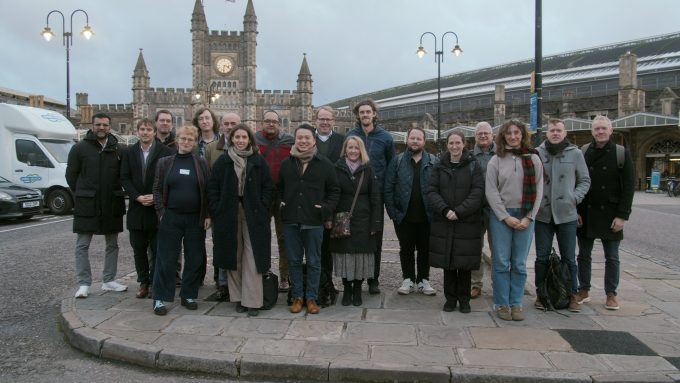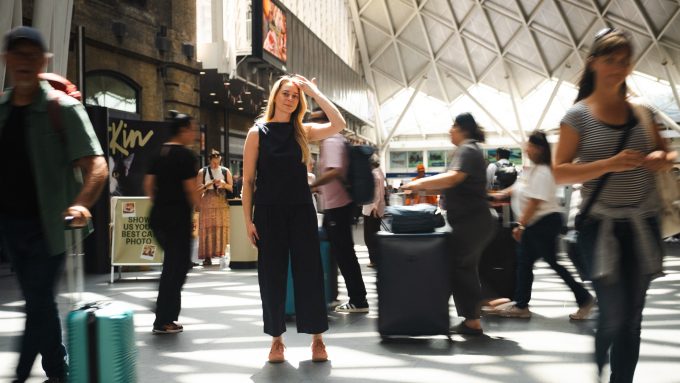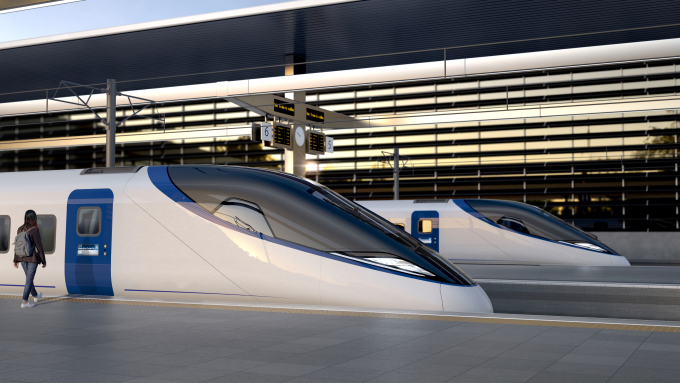
Researchers helping to make stations greener take residence at Bristol Temple Meads

Two leading academics in the fields of net zero and place leadership have begun major pieces of work alongside Connected Places Catapult around decarbonising train stations.
Dr Ges Rosenberg from the University of Bristol and Dr Dawid Hanak of the Net Zero Industry Innovation Centre at Teesside University are two of our new ‘Researchers in Residence’, a scheme to help forge closer ties between universities, industry and the wider Catapult Network.
Over the next 18 months, the pair are focusing their attention on Bristol Temple Meads, which has been designated as a ‘Station Innovation Zone’, delivered by Connected Places Catapult in partnership with Network Rail and supported by Innovate UK. The station allows new technologies to be trialled that aim to make railway environments more sustainable and the travelling experience safer and more seamless for passengers.
Ges Rosenberg is looking to create a net zero carbon route map for Temple Meads station, while helping to encourage people to enjoy healthier onward travel into Bristol.

His preliminary work has identified a need for stations to make use of localised clean energy, use water more efficiently and for retrofits and new developments to build with sustainable construction techniques.
Dawid Hanak’s study is focused on assessing energy consumption within station buildings and carbon emissions generated by passengers and staff; to identify ways of reducing emissions and creating economic potential. He aims to create a tool that identifies opportunities for decarbonising station buildings, infrastructure and passenger journeys, and quantifies the economic and environmental benefit of reducing emissions.

Achieving healthier outcomes
Ges says that his study “will look at how transport can be used to achieve healthier outcomes for people, and provide less polluting forms of mobility”. It is also important to think, he adds, about how stations form an important part of a city’s overall decarbonisation efforts.
“A great outcome for me would be for sustainability to come to the fore in stations, and for change to come about through new technologies and innovation, some of which is already being used internationally.”Dr Ges Rosenberg, University of Bristol
Dawid says he is keen to show there is more to decarbonising the railways than focusing on journeys by train; buildings need to be considered too.
“Reducing Scope 1 and 2 emissions can be achieved through energy efficiency and using renewable energy, but I am also interested in how human decisions can , such as how staff and passengers travel to and from the station and how tenants and retailers source their products and services,” he says.
“I want to develop a framework for organisations to engage with this vision, test new technologies, and raise awareness among passengers that their travel choices to and from stations have an impact on carbon.”
International best practice
Research carried out by Ges Rosenberg has looked at international best practices for stations. “From what I've seen, we've got quite a lot to learn in the UK, and a long way to go.
“Stations in Kyoto, Amsterdam and Zurich, for instance, have already initiated programmes of incremental sustainable improvement; decarbonising and doing that within the context of a station with historic value. That is exactly the challenge we have at Bristol Temple Meads.”
Dawid Hanak’s focus so far has been to understand the different sources of data used to calculate emissions, and to begin speaking with stakeholders to understand energy demand. Moving forward, he will be conducting passenger surveys at Bristol Temple Meads about their propensity to use stations and travel on trains in the future.
Tackling real world problems
Both academics say they are excited by being part of the Researchers in Residence programme. “For me, it shows that Connected Places Catapult is working to tackle real world problems through new solutions and innovations, and it has been hugely valuable to make use of their connections,” says Ges.
“The Station Innovation Zone follows a really a strong theme in Bristol which is all about social responsibility, innovation and decarbonisation.”
Dawid adds: “This Station Innovation Zone at Bristol Temple Meads helps rich discussions to take place, and for organisations and researchers to come in and test their ideas; seeing how they work in real life.”
The researchers’ focus on sustainability fits with one of the three challenge areas at Bristol Temple Meads, where . But they also point out that the aims of sustainability overlap with those of the other themes: safe, social and seamless mobility.
“We need a just transition to net zero, evidence of how we can do that, and to have conversations that are grounded in science and an understanding of business and social needs,” says Ges. “Managing uncertainty by having a demonstrator project and taking those learnings to other stations is really powerful.”
Dawid adds: “Decarbonising station buildings can be a challenge: their volume makes it expensive to heat and maintain. There is work to be done and digital technology is part of the answer; helping us to collate, understand and analyse data to make better decisions.”
Another round of the Researchers in Residence scheme will launch on 5 October, with funding of up to £50,000 available for academics who are chosen. Register here for a launch event giving details.
To be alerted about opportunities at Connected Places Catapult, join our Academic Network.





